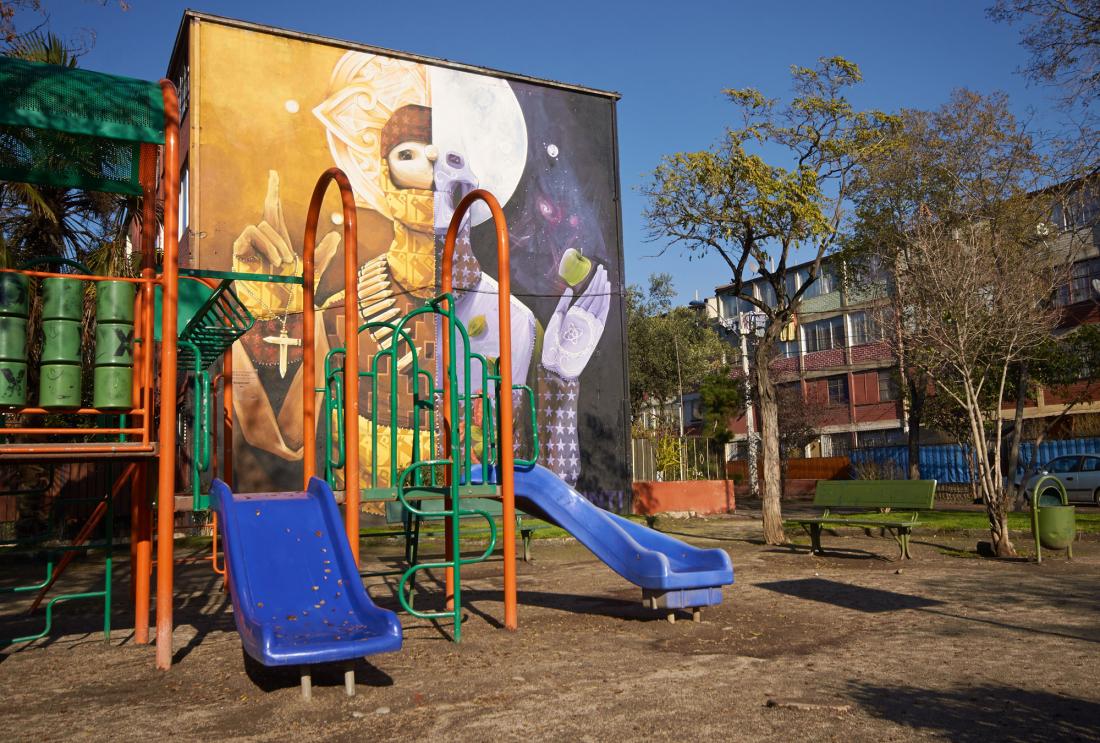Upgrading Public Parks in Chile
- Urban population
- Crime
- Social cohesion
- Community-driven development
- Infrastructure
Access to high-quality public green spaces can improve the economic and social well-being of a neighborhood. However, access to these spaces varies widely by economic class and location. Researchers conducted a randomized evaluation to test the impact of renovating public plazas on neighborhood security and community involvement.
Policy issue
Access to high-quality public green spaces can improve the economic and social well-being of a neighborhood. However, access to such spaces varies widely by economic class and location. In particular, public housing projects often include poorly designed and poorly maintained public spaces. Families living in such housing may be less likely to engage in activities outside of their homes, which can negatively affect their quality of life, their children’s development, and their sense of belonging in the community. Furthermore, poorly maintained public spaces are associated with higher levels of crime and lower levels of citizen engagement in the community.
As a result, many middle income countries have made improving access to green space and increasing the quality of public spaces a priority. While many projects seek to improve access to green public spaces, little rigorous research examines the relationship between those improvements and crime rates and community involvement.
Context of the evaluation
In Santiago, Chile, the poorest residents tend to live in isolated neighborhoods on the outskirts of the city. In these neighborhoods, crime levels are high and access to public space, such as parks or plazas, is limited.
Since 2008, Fundación Mi Parque has worked in Chile’s most vulnerable neighborhoods to rehabilitate public spaces and increase access to green spaces. The organization partners with neighborhood residents to renovate abandoned lots and run-down public plazas and convert them into public parks for the use of the broader community. Mi Parque involves families and community members from the early stages of park design through the construction and use of the green spaces. This model is intended to encourage a feeling of community ownership of the park and a shared stake in its future maintenance. Mi Parque relies on public-private partnerships to fund its projects: private companies generally cover construction costs as part of a corporate social responsibility program and municipal governments cover the continuing maintenance costs of the park.

Details of the intervention
Researchers conducted a randomized evaluation to test the impact of renovating public plazas on neighborhood security and community involvement.
From a list of vulnerable neighborhoods established by the Chilean National Security Survey (Encuesta Nacional de Seguridad), researchers and Mi Parque identified 56 communities with abandoned plazas. They then randomized 28 plazas to receive renovations as public green space and 28 to serve as a comparison group.
From 2012 to 2015, Mi Parque worked with treatment communities to design and renovate the parks. Local residents and Mi Parque personnel attended meetings to discuss the design of the greenspace and ensure the final design satisfied residents’ needs and preferences. Once the design was complete, Mi Parque representatives and volunteers from the community worked together to renovate, usually in a single community work day.
For each plaza, researchers surveyed a randomly selected subset of nearby households three to four months before renovations and again three to four months after completing the project. The surveys collected data on park use and maintenance, neighborhood social capital, crime and security, housing prices and investments, among other outcomes.
Results and policy lessons
Study ongoing; results forthcoming.
